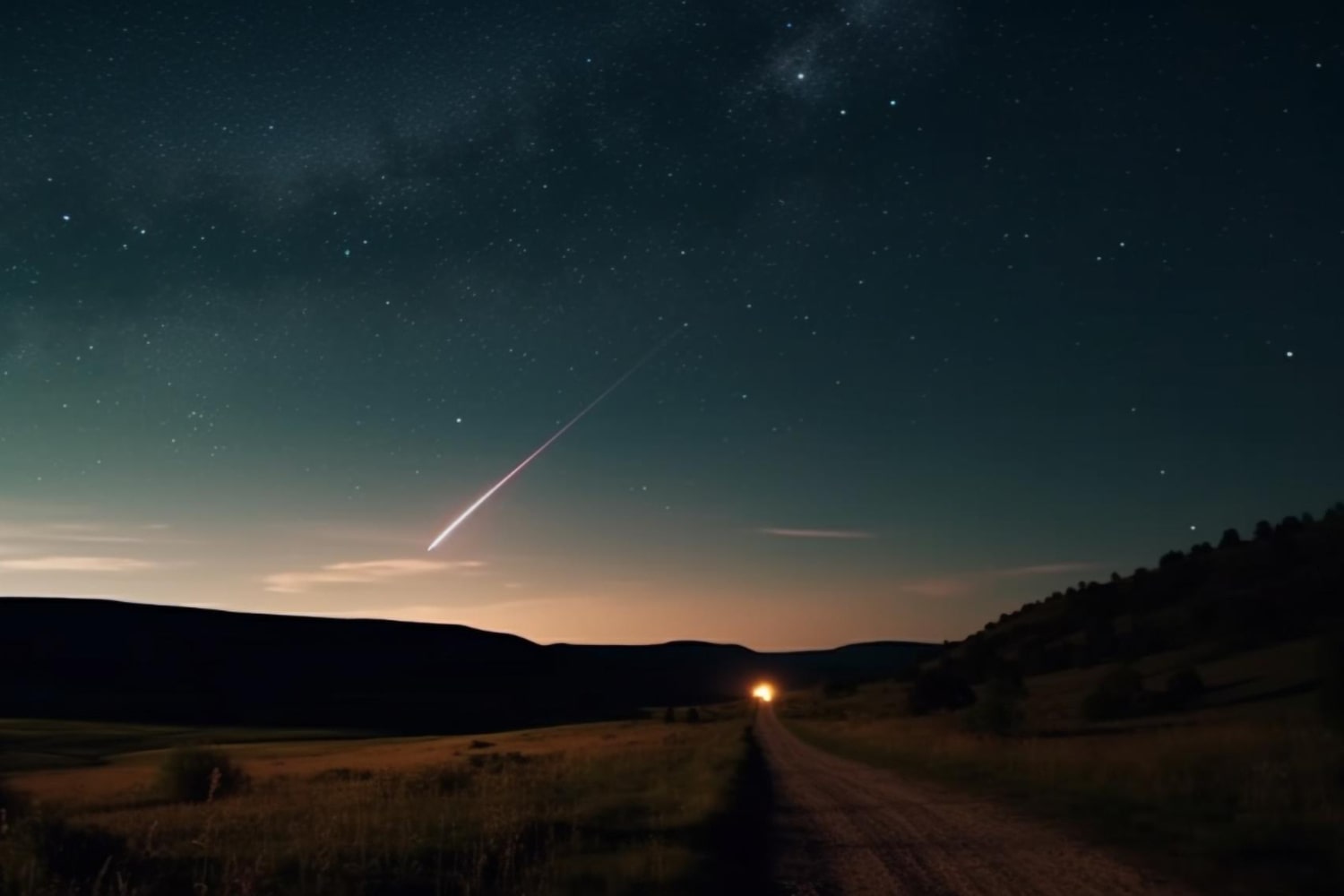Shooting stars have fascinated people for centuries and continue to captivate our imagination. Often called celestial fireworks, they inspire us to make wishes when we see a bright streak flash across the night sky. While they appear magical and romantic, there is a fascinating scientific explanation behind them that makes them even more intriguing. This article offers a collection of surprising and interesting facts about shooting stars you might not know. After reading, you may never look at the night sky the same way again.
- Shooting stars are not stars at all. What we see is a tiny particle of space dust or a small rock burning up as it enters Earth’s atmosphere. These particles are often no larger than a grain of sand.
- The scientific term for a shooting star is a meteor. If the object survives its journey through the atmosphere and reaches the Earth’s surface, it is called a meteorite. Before entering the atmosphere, it is known as a meteoroid.
- Meteors occur when Earth crosses the orbital path of a comet that has left behind a trail of dust and debris. These particles enter the atmosphere at high speed and burn up, producing visible light. Meteor showers happen annually when Earth passes through the same dust stream again.
- Most meteor showers are named after the constellation where their radiant is located. The radiant is the point in the sky from which the meteors appear to originate. For example, the Perseids are named after the constellation Perseus, and the Geminids after Gemini.
- Meteor showers can last several days or even weeks, but their peak activity usually spans one or two nights. During the peak, viewers can see dozens or even hundreds of meteors per hour. The best viewing conditions are found away from city lights.
- The Perseids, visible in August, are one of the brightest and most popular meteor showers. At their peak, they can produce up to 100 meteors per hour. They are caused by debris from the comet Swift-Tuttle.
- The Geminids, which appear in December, are another impressive meteor shower and sometimes even outshine the Perseids. Their source is the asteroid Phaethon, making them unusual since most meteor showers are caused by comets. Despite the cold, clear winter skies offer excellent visibility.
- Meteors travel at incredibly high speeds ranging from 40 to 70 kilometers per second. Because of this speed, they burn up almost instantly upon entering the atmosphere. The light flash we see is caused by the intense heat from friction with the air.
- Some meteors leave behind glowing trails that last for several seconds. These are known as ionization trails. Depending on the composition of the meteor, the trail may appear green, blue, or orange.
- Exceptionally bright meteors are called fireballs or bolides. These can sometimes be visible even during daylight. On rare occasions, fireballs explode in the atmosphere, such as the Chelyabinsk event in 2013.
- In ancient times, shooting stars were often considered omens or messages from the gods. Many cultures associated them with the birth or death of important individuals. Although science has disproved such beliefs, the mystery of shooting stars continues to inspire.
- Across various traditions, it is believed that making a wish when you see a shooting star will make it come true. While this is a superstition, the tradition remains widely practiced. It adds a touch of wonder to the experience of stargazing.
- Watching shooting stars is one of the simplest ways to engage with astronomy. No telescope or special equipment is needed—just a dark sky, an open area, and a bit of patience. Sometimes you can spot several meteors in just a few minutes.
- Scientists use radar systems to detect meteors that are invisible to the naked eye. These systems can track even the tiniest particles burning up in the upper atmosphere. This helps researchers better understand the composition and origin of meteor showers.
- Shooting stars are not unique to Earth. Meteors have also been observed on Mars when the planet crossed the dust trails left by comets. This shows that meteor showers are common throughout the solar system.
- Some meteors do not completely burn up and reach the ground as meteorites. These fragments can contain clues about the oldest bodies in the solar system. Studying meteorites helps scientists learn more about the origins of planets and space.
- Meteorites have been discovered in glaciers, deserts, and even on rooftops. They vary in size from tiny pebbles to large boulders. The most valuable specimens can be sold at auctions for hundreds of thousands of dollars.
- Occasionally, meteors have an artificial origin. When old satellites or spacecraft re-enter the atmosphere and burn up, they can resemble shooting stars. As space exploration increases, such sightings become more common.
- The best time to observe meteor showers is after midnight when the radiant is high in the sky. At this time, Earth is moving directly into the stream of particles, increasing meteor activity. A moonless, clear night provides ideal viewing conditions.
- Most major meteor showers occur at the same time each year, allowing enthusiasts to plan ahead. The Perseids peak in mid-August, while the Quadrantids appear in early January. Astronomical calendars list the exact dates and times for each event.
Shooting stars are among the most beautiful and awe-inspiring natural phenomena. These interesting facts reveal the science behind the fleeting light we see in the sky and deepen our appreciation for the universe. Watching a meteor shower connects us to something greater and stirs curiosity about our place in the cosmos. Perhaps such a moment under the stars is what sparks a lifelong fascination with space.





